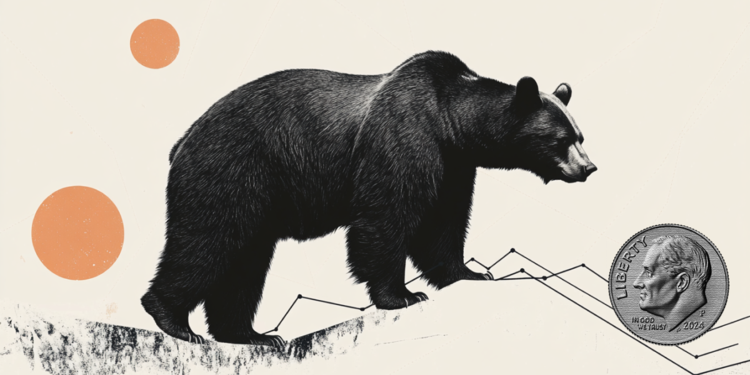- USD/CAD edges lower to around 1.4240 in Monday’s late American session.
- Goods from Canada that comply with the USMCA trade agreement will remain exempt from Trump’s tariff.
- Investors are stepping up bets that the Fed will cut interest rates aggressively this year.
The USD/CAD pair weakens to near 1.4240, snapping the two-day winning streak during the late American session on Monday. The Canadian Dollar (CAD) edged higher against the Greenback as Canada last week avoided new levies on its goods in a widening global trade war triggered by US President Donald Trump.
Last week, Trump announced sweeping new tariffs for dozens of countries, imposing a 10% baseline tariff on all imports to the US and higher targeted duties on some of the country’s biggest trading partners. Canada and Mexico were notably spared in this round, except for auto exports and steel and aluminum which fall under separate tariff policies.
This development provides some support to the Loonie against the US dollar (USD). “CAD is outperforming non-USD peers as Canada remains relatively shielded from the new round of tariffs,” said Jayati Bharadwaj, a global FX strategist at TD Securities.
Investors raise their bets of more interest rate cuts from the US Federal Reserve (Fed) this year as Trump’s tariffs raise US recession fears. The markets are now pricing in nearly 65% odds of a Fed cut in May and futures now point to about 100 basis points (bps) worth of rate reductions by December this year, according to the CME FedWatch tool. This, in turn, could drag the USD lower against its rivals in the near term.
Canadian Dollar FAQs
The key factors driving the Canadian Dollar (CAD) are the level of interest rates set by the Bank of Canada (BoC), the price of Oil, Canada’s largest export, the health of its economy, inflation and the Trade Balance, which is the difference between the value of Canada’s exports versus its imports. Other factors include market sentiment – whether investors are taking on more risky assets (risk-on) or seeking safe-havens (risk-off) – with risk-on being CAD-positive. As its largest trading partner, the health of the US economy is also a key factor influencing the Canadian Dollar.
The Bank of Canada (BoC) has a significant influence on the Canadian Dollar by setting the level of interest rates that banks can lend to one another. This influences the level of interest rates for everyone. The main goal of the BoC is to maintain inflation at 1-3% by adjusting interest rates up or down. Relatively higher interest rates tend to be positive for the CAD. The Bank of Canada can also use quantitative easing and tightening to influence credit conditions, with the former CAD-negative and the latter CAD-positive.
The price of Oil is a key factor impacting the value of the Canadian Dollar. Petroleum is Canada’s biggest export, so Oil price tends to have an immediate impact on the CAD value. Generally, if Oil price rises CAD also goes up, as aggregate demand for the currency increases. The opposite is the case if the price of Oil falls. Higher Oil prices also tend to result in a greater likelihood of a positive Trade Balance, which is also supportive of the CAD.
While inflation had always traditionally been thought of as a negative factor for a currency since it lowers the value of money, the opposite has actually been the case in modern times with the relaxation of cross-border capital controls. Higher inflation tends to lead central banks to put up interest rates which attracts more capital inflows from global investors seeking a lucrative place to keep their money. This increases demand for the local currency, which in Canada’s case is the Canadian Dollar.
Macroeconomic data releases gauge the health of the economy and can have an impact on the Canadian Dollar. Indicators such as GDP, Manufacturing and Services PMIs, employment, and consumer sentiment surveys can all influence the direction of the CAD. A strong economy is good for the Canadian Dollar. Not only does it attract more foreign investment but it may encourage the Bank of Canada to put up interest rates, leading to a stronger currency. If economic data is weak, however, the CAD is likely to fall.

